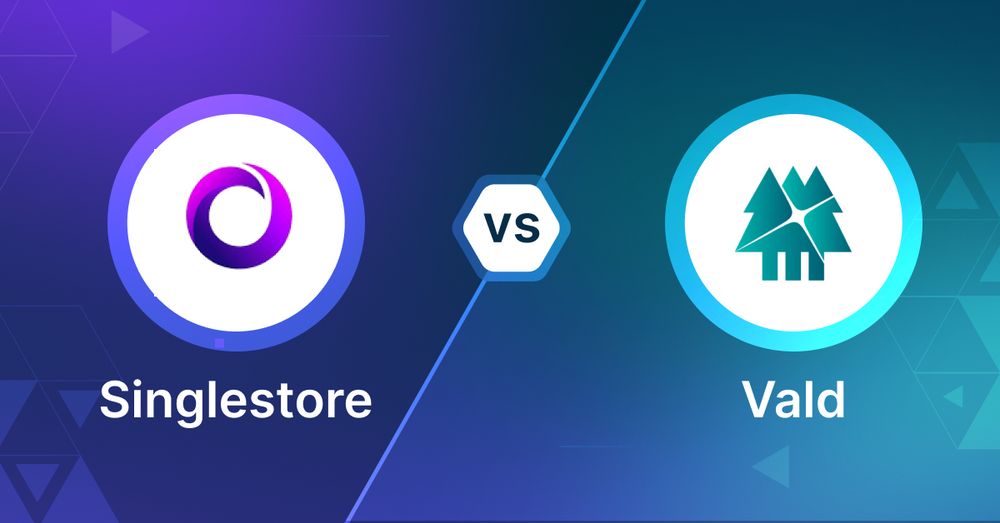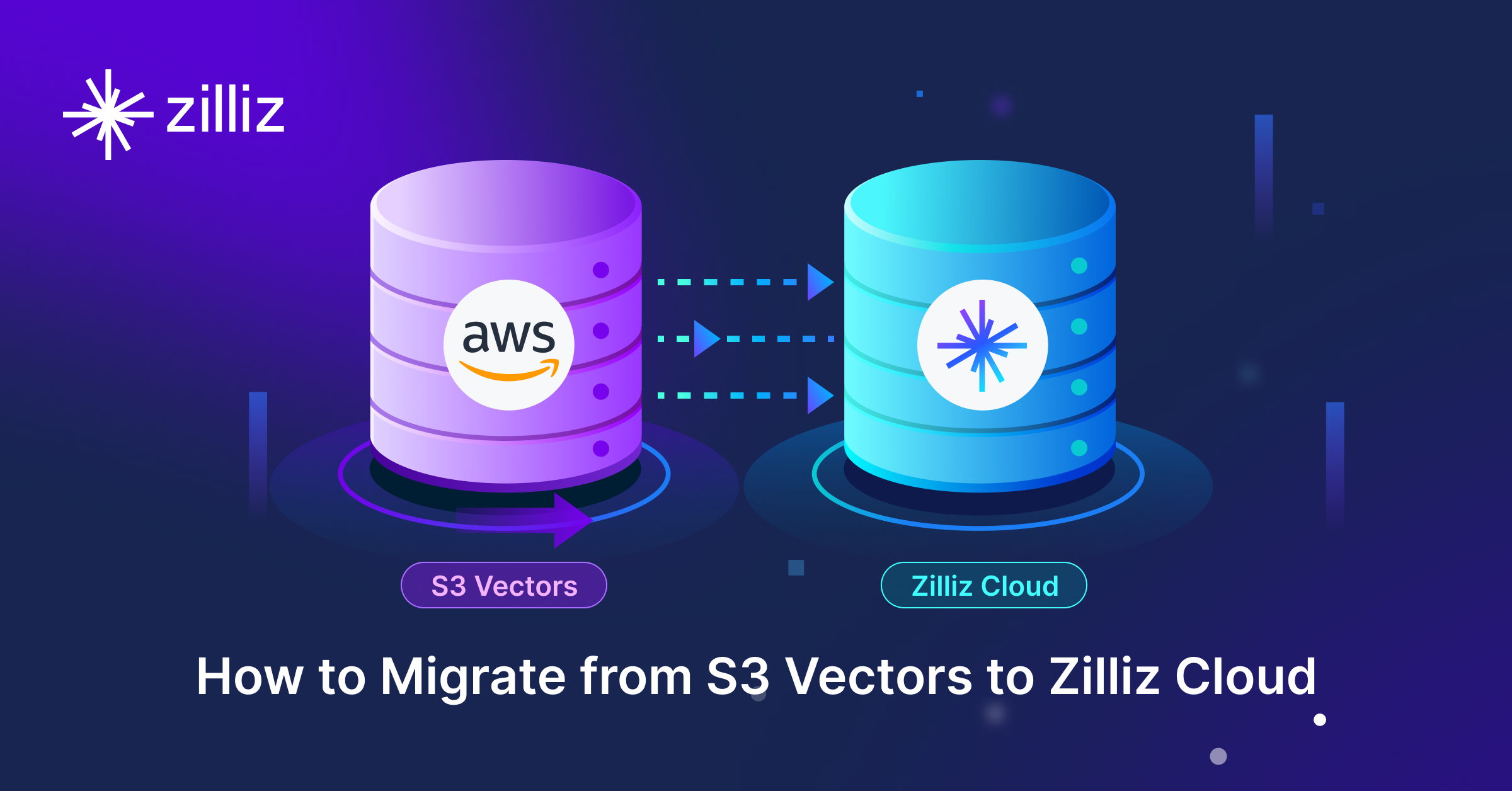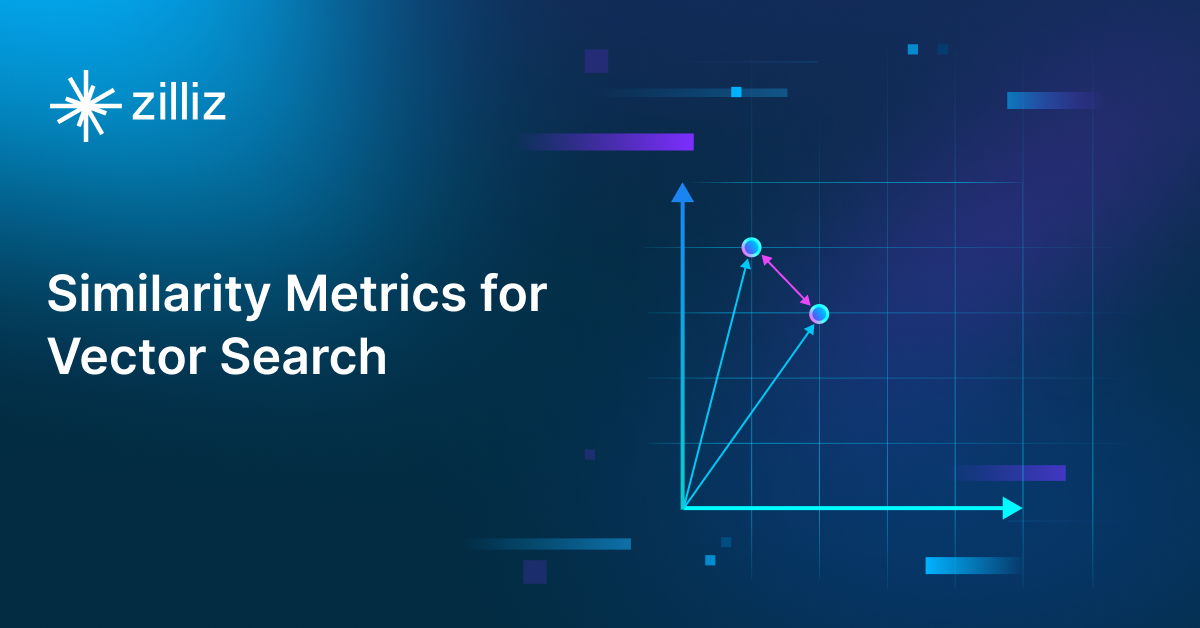SingleStore vs Vald Choosing the Right Vector Database for Your AI Apps

What is a Vector Database?
Before we compare SingleStore and Vald, let's first explore the concept of vector databases.
A vector database is specifically designed to store and query high-dimensional vectors, which are numerical representations of unstructured data. These vectors encode complex information, such as the semantic meaning of text, the visual features of images, or product attributes. By enabling efficient similarity searches, vector databases play a pivotal role in AI applications, allowing for more advanced data analysis and retrieval.
Common use cases for vector databases include e-commerce product recommendations, content discovery platforms, anomaly detection in cybersecurity, medical image analysis, and natural language processing (NLP) tasks. They also play a crucial role in Retrieval Augmented Generation (RAG), a technique that enhances the performance of large language models (LLMs) by providing external knowledge to reduce issues like AI hallucinations.
There are many types of vector databases available in the market, including:
- Purpose-built vector databases such as Milvus, Zilliz Cloud (fully managed Milvus)
- Vector search libraries such as Faiss and Annoy.
- Lightweight vector databases such as Chroma and Milvus Lite.
- Traditional databases with vector search add-ons capable of performing small-scale vector searches.
SingleStore is a distributed, relational, SQL database management system with vector search as an add-on and Vald is a purpose-built vector database. This post compares their vector search capabilities.
SingleStore: Overview and Core Technology
SingleStore has made vector search possible by putting it in the database itself, so you don’t need separate vector databases in your tech stack. Vectors can be stored in regular database tables and searched with standard SQL queries. For example, you can search similar product images while filtering by price range or explore document embeddings while limiting results to specific departments. The system supports both semantic search using FLAT, IVF_FLAT, IVF_PQ, IVF_PQFS, HNSW_FLAT, and HNSW_PQ for vector index and dot product and Euclidean distance for similarity matching. This is super useful for applications like recommendation systems, image recognition and AI chatbots where similarity matching is fast.
At its core SingleStore is built for performance and scale. The database distributes the data across multiple nodes so you can handle large scale vector data operations. As your data grows you can just add more nodes and you’re good to go. The query processor can combine vector search with SQL operations so you don’t need to make multiple separate queries. Unlike vector only databases SingleStore gives you these capabilities as part of a full database so you can build AI features without managing multiple systems or dealing with complex data transfers.
For vector indexing SingleStore has two options. The first is exact k-nearest neighbors (kNN) search which finds the exact set of k nearest neighbors for a query vector. But for very large datasets or high concurrency SingleStore also supports Approximate Nearest Neighbor (ANN) search using vector indexing. ANN search can find k near neighbors much faster than exact kNN search sometimes by orders of magnitude. There’s a trade off between speed and accuracy - ANN is faster but may not return the exact set of k nearest neighbors. For applications with billions of vectors that need interactive response times and don’t need absolute precision ANN search is the way to go.
The technical implementation of vector indices in SingleStore has specific requirements. These indices can only be created on columnstore tables and must be created on a single column that stores the vector data. The system currently supports Vector Type(dimensions[, F32]) format, F32 is the only supported element type. This structured approach makes SingleStore great for applications like semantic search using vectors from large language models, retrieval-augmented generation (RAG) for focused text generation and image matching based on vector embeddings. By combining these with traditional database features SingleStore allows developers to build complex AI applications using SQL syntax while maintaining performance and scale.
Vald: Overview and Core Technology
Vald is a powerful tool for searching through huge amounts of vector data really fast. It's built to handle billions of vectors and can easily grow as your needs get bigger. The cool thing about Vald is that it uses a super quick algorithm called NGT to find similar vectors.
One of Vald's best features is how it handles indexing. Usually, when you're building an index, everything has to stop. But Vald is smart - it spreads the index across different machines, so searches can keep happening even while the index is being updated. Plus, Vald automatically backs up your index data, so you don't have to worry about losing everything if something goes wrong.
Vald is great at fitting into different setups. You can customize how data goes in and out, making it work well with gRPC. It's also built to run smoothly in the cloud, so you can easily add more computing power or memory when you need it. Vald spreads your data across multiple machines, which helps it handle huge amounts of information.
Another neat trick Vald has is index replication. It stores copies of each index on different machines. This means if one machine has a problem, your searches can still work fine. Vald automatically balances these copies, so you don't have to worry about it. All of this makes Vald a solid choice for developers who need to search through tons of vector data quickly and reliably.
Key Differences
Search Methodology
SingleStore offers multiple search approaches: exact k-nearest neighbors (kNN) and Approximate Nearest Neighbor (ANN) search. The system supports multiple vector index types: FLAT, IVF_FLAT, IVF_PQ, IVF_PQFS, HNSW_FLAT, HNSW_PQ. You can choose between dot product and Euclidean distance for similarity matching. Vald takes a focused approach using the NGT (Neighborhood Graph and Tree) algorithm as its core search mechanism. This algorithm is designed for high-speed similarity search across large vector datasets and is particularly efficient for pure vector search.
Data Handling and Integration
SingleStore is unique in that it embeds vector search within a SQL database. This means you can combine vector search with SQL queries, store vectors in regular database tables and apply SQL filters to vector search results. This unified approach reduces the tech stack by eliminating the need for a separate vector database. Vald handles data differently, it focuses on vector operations only. It provides custom data input/output handlers and gRPC integration support, so it’s suitable for applications that deal primarily with vector data and need specialized vector search capabilities.
Scalability and Performance
Both systems have scalability features but they approach it differently. SingleStore distributes data across multiple nodes, you can add nodes to scale capacity. The system combines vector and SQL operations in distributed queries but requires specific columnstore table configuration. Vald’s scalability architecture includes distributed index building across machines, automatic index data backup and index replication. It can continue to process searches during index updates and has automatic load balancing to maintain performance as you grow. The cloud-ready design makes it easy to scale compute and memory as needed.
Practical Applications
SingleStore is good for applications that need both traditional database operations and vector search. It’s great for recommendation systems, image recognition and AI chatbots that need structured data along with vector operations. Common use cases are semantic search using vectors from large language models and retrieval-augmented generation for focused text generation. Vald is good for pure vector search at scale. Its architecture is particularly suited for applications that need continuous indexing without downtime and built-in failover through index replication.
Implementation Considerations
The choice between SingleStore and Vald often comes down to your project requirements. SingleStore might be the better choice if you are already familiar with SQL and need to combine traditional database operations with vector search. The SQL based approach reduces the learning curve and simplifies the overall architecture. Vald might be more suitable for projects that are focused on vector search only, especially those that require high availability and automatic failover. Its specialized focus on vector operations gives better performance for pure vector search use cases.
When to Choose SingleStore
Choose SingleStore when you need to combine traditional database operations with vector search, want SQL syntax and want applications that handle both structured data and vector operations in one system.
When to Choose Vald
Select Vald when your main focus is pure vector search operations, you need continuous indexing without downtime, you need built-in failover through index replication or you want a specialized tool for vector operations.
Conclusion
SingleStore is great for SQL and combined vector-traditional database operations for complex applications that need both. Vald is great for pure vector search scenarios with its specialized focus and high-availability. Your choice should be based on whether you need an integrated database with vector capabilities (SingleStore) or a dedicated vector search system (Vald) and your team’s expertise and existing tech stack.
Read this to get an overview of SingleStore and Vald but to evaluate these you need to evaluate based on your use case. One tool that can help with that is VectorDBBench, an open-source benchmarking tool for vector database comparison. In the end, thorough benchmarking with your own datasets and query patterns will be key to making a decision between these two powerful but different approaches to vector search in distributed database systems.
Using Open-source VectorDBBench to Evaluate and Compare Vector Databases on Your Own
VectorDBBench is an open-source benchmarking tool for users who need high-performance data storage and retrieval systems, especially vector databases. This tool allows users to test and compare different vector database systems like Milvus and Zilliz Cloud (the managed Milvus) using their own datasets and find the one that fits their use cases. With VectorDBBench, users can make decisions based on actual vector database performance rather than marketing claims or hearsay.
VectorDBBench is written in Python and licensed under the MIT open-source license, meaning anyone can freely use, modify, and distribute it. The tool is actively maintained by a community of developers committed to improving its features and performance.
Download VectorDBBench from its GitHub repository to reproduce our benchmark results or obtain performance results on your own datasets.
Take a quick look at the performance of mainstream vector databases on the VectorDBBench Leaderboard.
Read the following blogs to learn more about vector database evaluation.
Further Resources about VectorDB, GenAI, and ML
- What is a Vector Database?
- SingleStore: Overview and Core Technology
- Vald: Overview and Core Technology
- Key Differences
- When to Choose SingleStore
- When to Choose Vald
- Conclusion
- Using Open-source VectorDBBench to Evaluate and Compare Vector Databases on Your Own
- Further Resources about VectorDB, GenAI, and ML
Content
Start Free, Scale Easily
Try the fully-managed vector database built for your GenAI applications.
Try Zilliz Cloud for FreeKeep Reading

Migrating from S3 Vectors to Zilliz Cloud: Unlocking the Power of Tiered Storage
Learn how Zilliz Cloud bridges cost and performance with tiered storage and enterprise-grade features, and how to migrate data from AWS S3 Vectors to Zilliz Cloud.

Similarity Metrics for Vector Search
Exploring five similarity metrics for vector search: L2 or Euclidean distance, cosine distance, inner product, and hamming distance.

GPL: Generative Pseudo Labeling for Unsupervised Domain Adaptation of Dense Retrieval
GPL is an unsupervised domain adaptation technique for dense retrieval models that combines a query generator with pseudo-labeling.
The Definitive Guide to Choosing a Vector Database
Overwhelmed by all the options? Learn key features to look for & how to evaluate with your own data. Choose with confidence.